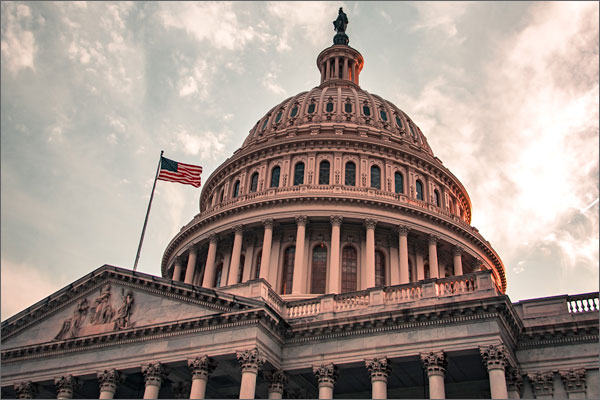
The $740 billion Inflation Reduction Act signed into federal law in August 2022 contains many tax breaks while raising revenue through a new minimum tax on large, profitable corporations and an excise tax on stock buybacks. It is intended to reduce the U.S. deficit by about $300 billion. Other revenue would come from stricter enforcement of tax compliance by the IRS.
Here are some highlights of the new legislation that may be important for your tax planning.
15% Corporate Alternative Minimum Tax
The IRA imposes a new 15% corporate alternative minimum tax on the adjusted financial statement income of applicable corporations. The minimum tax will apply if it exceeds the taxpayer’s regular tax including its base erosion and anti-abuse tax for the tax year. This provision is effective for tax years beginning after December 31, 2022.
An applicable corporation is any corporation (other than an S corporation, regulated investment company, or a real estate investment trust) that meets an average annual adjusted financial statement income test for one or more earlier tax years that end after December 31, 2021. A corporation meets the income test if its average annual adjusted financial statement income for the three-tax-year period (determined without regard to loss carryovers) ending with the tax year exceeds $1 billion. Other rules apply.
How many businesses are affected? In an analysis, the Joint Committee on Taxation estimated that about 150 taxpayers would be subject to the corporate minimum tax annually.
Excise Tax on Corporate Stock Repurchases
The IRA imposes on each “covered corporation” a tax equal to 1% of the fair market value of any stock of the corporation that’s repurchased by the business during the tax year. A “covered corporation” is any domestic corporation with stock traded on an established securities market.
The 1% excise tax applies to repurchases of stock after December 31, 2022.
Clean Vehicle Tax Credit
The current tax credit for qualified plug-in electric vehicles is significantly revised in the IRA. Currently, a taxpayer can claim a maximum credit of $7,500 for each new qualified plug-in electric drive vehicle placed in service during the tax year. Certain vehicle requirements must be met.
Currently, the credit phases out beginning in the second calendar quarter after a manufacturer sells more than 200,000 plug-in electric drive motor vehicles for use in the U.S. after 2009. Under the IRA, the plug-in vehicle credit has been renamed the clean vehicle credit and the manufacturer limitation on the number of vehicles eligible for the credit has been eliminated after December 31, 2022.
However, the new law changes how the clean vehicle credit is calculated. Specifically, a vehicle must meet critical mineral component requirements and requirements that the batteries must be made in America. There are also price and income limitations. The clean vehicle credit is not allowed for a vehicle with a manufacturer’s suggested retail price above $80,000 for vans, SUVs and pickups, and above $55,000 for other vehicles.
A clean vehicle credit is not allowed if a taxpayer’s modified adjusted gross income for the current or preceding tax year exceeds $150,000 for single filers, $300,000 for married couples filing jointly and $225,000 for heads of household.
Due to all these requirements, auto manufacturers and dealers are complaining that many electric vehicles and buyers will not qualify for the tax credit.
Previously Owned and Commercial Vehicles
The IRA also contains a tax credit for used plug-in electric vehicles purchased after 2022. The tax credit is $4,000 or 30% of the vehicle’s sale price, whichever is less. There are also price and income limitations. An eligible previously owned clean vehicle is one with a model year that’s at least two years earlier than the calendar year when a taxpayer acquires it.
In addition, the IRA adds a new commercial clean vehicle credit for qualified vehicles acquired and placed in service after December 31, 2022. The credit is a component of the general business credit.
Residential Energy Improvements
Individual taxpayers can also receive tax breaks for home energy efficiency improvements, such as solar panels, energy-efficient water heaters, heat pumps and HVAC systems. The new law also extends, increases and modifies a tax credit for new home construction that meets certain requirements.
Provisions Related to Climate, Energy and Health Care
The legislation includes many new, extended and increased tax credits intended to incentivize both businesses and individuals to boost their use of renewable energy. For example, it provides tax credits to private companies and public utilities to produce renewable energy or manufacture parts used in renewable projects, such as wind turbines and solar panels. Clean energy producers that pay a prevailing wage also may qualify for tax credits.
In addition, the IRA allows Medicare to negotiate the price of prescription drugs and prohibits future administrations from refusing to negotiate. It also caps the annual out-of-pocket drug costs of Medicare enrollees at $2,000 and monthly insulin costs at $35 — and provides them free vaccines. Additional provisions to rein in drug costs include a requirement that pharmaceutical companies that raise the prices on drugs purchased by Medicare faster than the rate of inflation rebate the difference back to the program.
The IRA also should reduce health care costs for Americans who obtain coverage from the federal Health Insurance Marketplace. It extends the expansion of subsidies — in the form of refundable premium tax credits — through 2025. These subsidies were scheduled to expire at the end of 2022.
Qualified Small Business Payroll Tax Credit for Research
Another provision in the IRA would boost the payroll tax credit for increasing research activities. Currently, a qualified small business (QSB) may elect to take part of the research credit as a payroll tax credit against its employer FICA tax liability. A QSB must have gross receipts of less than $5 million and meet other requirements. An eligible business with qualifying research expenses can then opt to apply up to $250,000 of its research credit against its payroll tax liability.
Under the IRA, beginning after December 31, 2022, a QSB can choose to apply another $250,000 in qualifying research expenses (for a total of $500,000) against its payroll tax liability.
If you have questions about provisions in the Inflation Reduction Act that impact your tax planning, talk to your tax team at LvHJ.
Read: More tax breaks for small businesses








